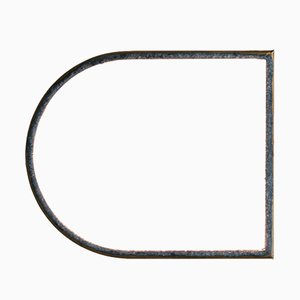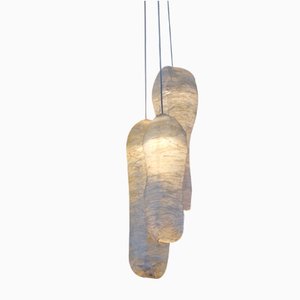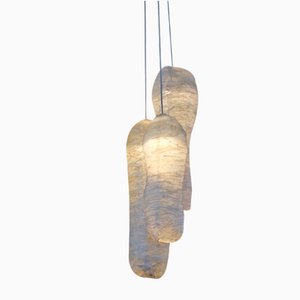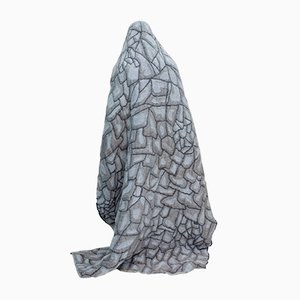Young designers who inspire us in 2018
Fresh Takes
It’s the beginning of a new year and, depending on where you are, the molting Christmas trees have been set to the curbs, the firework detritus has been swept away, and the champagne bottles have found their way to the recycling bins. According to tradition, now’s the perfect time to take stock, make plans, and set a new course. Rather than fall back onto predictable, personal self-help resolutions, we’ve opted to spotlight the work of two visionary young designers who inspire us to feel optimistic and work toward a better world in 2018 and beyond.
One of the most exciting aspects of the field of design is its unwavering momentum towards innovation. In design, it’s all about creating things that are not just novel but also actually better: solving real world problems and improving quality of life. The groundbreaking work of rising Dutch design star Nienke Hoogvliet embodies this ethos with distinct energy and sensitivity. Over the last few years, since the Willem De Kooning Academy graduate opened her studio in Delft in 2013, Hoogvliet has attracted international attention with projects like SEA ME—a gorgeous, green-hued rug made from sea algae yarn and upcycled fishing nets—and RE-SEA ME—an exploration of applications for chemical-free fish-skin leather, including a delicate wall-hanging and a minimalist stool. Recently, Hoogvliet collaborated with the Dutch Water Authorities on a project that is nothing short of astonishing: Waterschatten employs cellulose reclaimed during the water purification process in the creation of a series of bowls, lamps, and a stunning dining table. Put simply, these beautiful objects are made from used toilet paper. There’s something magical about the way Hoogvliet transforms raw materials into finished products. Her alchemical approach is not innovation in the form of superficial re-styling but a thorough reevaluation of material processes and a reconsideration of what design is meant to do.
As you’ve probably gathered, Hoogvliet’s practice is dedicated to drawing attention to environmental degradation by proposing, researching, and inventing sustainable methodologies that might even go some way towards reversing the damage that’s already been inflicted. “In 2018, I think sustainability will become even more important,” Hoogvliet predicts. “I think circularity will become a focal point, realizing that concentrating on only one aspect of sustainability doesn’t necessarily mean that [a product is] sustainable overall. I would like to see a more holistic approach.” The goal of innovative, sustainable design has got to be more than just one-off pieces or small pilot projects. Instead, we need a comprehensive shift in attitude towards prioritizing environmental protection and turning away from toxic materials and processes. As Hoogvliet says, “my hope is that that this kind of thinking gets integrated into all designs; that it becomes something totally normal.”
Fellow WdKA graduate Isaac Monté is also well known for his experimental approach to materials, albeit with a rather different output, one that highlights the sublime artistry inherent in the natural world. The Belgian designer has spent years perfecting a set of wild techniques in his Rotterdam studio for growing, shaping, and coloring mineral crystals, which he has incorporated so far into jewelry, vases, and other tabletop objects. Monté’s work meanders unselfconsciously between design and art. His Crystallized Icons series, for example, appropriates iconic works of functional, historical design and encases them in brilliant crystals, rendering them unusable but also elevating the single exemplar to a unique object of contemplation. “I find it very interesting to design in collaboration with nature,” Monté explains. “I can influence the colors and the growing process, but the result is always a surprise for me, how the object comes out of the tank.” The designer sets the process in motion, relinquishes control, and each piece emerges from a vat like a butterfly from a cocoon.
Over the last generation, there’s been an increasing interest in bio-mimetic design; the Japanese Shinkansen bullet train redesign in the 1990s that modeled the nose on the beak of a kingfisher bird to dramatically reduce noise is a great early example. But Monté and other young creatives like him are taking it a step further.The emphasis has shifted from imitating nature, toward harnessing natural processes as an equal collaborator in creative production, with both the maker and made promoting greater harmony with the natural world. He doesn’t waste time thinking about whether what he does is art or design, and says, noncommittally, “Maybe it is something in-between, depending on the outcome.” In either case, Monté does specify that he “would rather call it bio-art or bio-design.” Monté shares with us that he will continue his work with crystals in the New Year, “incorporating other materials like metal and mirror, as well as working at different scales.” He will be presenting some of these new pieces at Ambiente in Frankfurt, the Science Gallery in Dublin, and INDEX in Dubai over the coming months.
In both of these young designers’ work, there’s this clear notion of designing not in a vacuum, but within an integrated network of environmental, historical, and social factors. There’s a sense of contemplation and introspection; almost a nurturing of the object through the time-consuming, labor-intensive, experimental methodologies used. The result is radically fresh objects that are both thought-provoking and desirable. Here's to 2018 bringing all of us a dash of this kind of magic, fresh thinking, and respect for our planet. As Isaac Monté wrote to us in the first few days of January, “It’s going to be a shiny crystal year!”
-
Text by
-
Gretta Louw
A South-African born Australian currently based in Germany, Gretta is a globetrotting multi-disciplinary artist and language lover. She holds a degree in Psychology, and has seriously avant garde leanings.
-
More to Love
Eclipse D Light by Isaac Monté

Filter Factory Bird House from Cigarette Filters by Isaac Monté

Meat Lamp 3 by Isaac Monté, 2016

Meat Lamp 2 by Isaac Monté, 2016

Meat Lamp 1 by Isaac Monté, 2016

Meat Vase 004 by Isaac Monté

Meat Vase 003 by Isaac Monté, 2016

Meat Vase 002 by Isaac Monté, 2016

Grey Hide Blanket by Nienke Hoogvliet for TextielMuseum Tilburg

Pink Hide Blanket by Nienke Hoogvliet for TextielMuseum Tilburg


